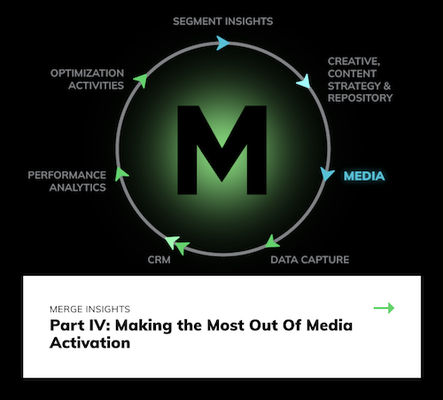
Part Four of MERGE’s seven-part series on omnichannel marketing takes a closer look - through the lens of pharma - at media activation strategies built around a deeper understanding of target audience journeys, needs, demographics, and media consumption habits.
In an era where consumers are more connected and empowered than ever before, organizations are being pushed to adapt their marketing strategies to effectively reach and engage their target audiences across multiple channels while providing a seamless and cohesive customer experience across all touchpoints. However, executing an omnichannel strategy requires careful planning and execution, particularly when it comes to media activation.
Here, we will discuss the importance of optimizing a media activation approach within an omnichannel marketing ecosystem, including what it means to comprehensively account for target audience journeys, customer needs and demographics, and media consumption habits. Whether you are a life science marketer looking to improve your omnichannel strategy or an organizational leader seeking to expand your reach and impact, this article will provide you with valuable insights and actionable advice to help make the most of your media activation efforts.
Setting Your Media Activation Approach
Determining the right media activation approach within an omnichannel ecosystem begins with having a nuanced understanding of your organization’s creative message, the target audience that is receiving and internalizing said message, as well as the experiences your audience is likely to encounter along their journey of discovery.
Specific to the field of life sciences, an understanding of media consumption habits - whether it’s for health care providers (HCPs) or consumers - and the channels that are best for delivering creative messages to your desired audience throughout their journey is essential to elevating your media activation plan of attack. This includes earned media, owned media, and paid media.
“Certain channels are uniquely qualified to deliver messages during different phases of the customer journey,” echoed Bob Deininger, Vice President and Integrated Media Lead at MERGE.
“Display, for example, can do a lot of the heavy lifting early in the customer journey towards organizational goals of driving awareness. On the other hand, things like medical journals and events are appropriate when we’re trying to convey a complicated, more detailed message that requires more explanation.”
Data also plays a significant role as it relates to media activation, as it can inform virtually every aspect of an organization’s media and measurement strategy. For example, during the planning and targeting phase, it’s necessary to think about relevant data segments - whether they be diagnosis data or prescription data from companies - or if a client has a national provider identifier (NPI) list. Really, anything that enables organizations to precisely target the audience they need to reach is fundamental to successful media activation.
Measurement is also critical, as organizations need to consider the data needed to calculate metrics and optimize for campaign performance. According to Deininger, organizations specifically need to think about the types of data they collect from their website and how they’re going to personalize messages and use the media data on performance to get smarter and achieve the most favorable results.
One example of this is look-alike targeting, which is the practice of delivering messages to individuals who look and act similar to the members of your target audience. This strategy works through a combination of machine learning algorithms, marrying desired audience data with an intelligent look-alike modeling algorithm, resulting in a pattern that helps illustrate and explain user behavior.
“We can leverage the data that we’ve used to build out a target and look at the performance of our preferred segments to expand the audience based upon physicians, for example, that may look like ones that are engaging the most,” says Deininger.
The consideration of target audience journeys, customer needs and demographics, and media consumption habits certainly serve as the basis for any effective media activation approach. However, identifying the right channels for delivering messages to your audience and intelligently implementing data to help inform everything from planning and targeting to measurement and optimization, is where organizations can truly transform and magnify their media activation efforts.
The original version of this page was published at: https://mergeworld.com/insights/merge-insights/part-iv-making-the-most-out-of-media-activation
We are an award-winning marketing services firm that merges storytelling and technology to bring health, wealth and happiness to the world. People come to MERGE looking for a new way; for ideas and... Read more
Part I of MERGE’s seven-part series on omnichannel marketing takes a look at what omnichannel is, how we define it and offers a preview of the critical components for building ...read more
Storytelling and technology are our two core competencies at MERGE. They are art and science, left brain and right brain, yin and yang. But while we can measure our technology’s ...read more
Are you taking full advantage of your medical partners?While medical teams at life science agencies are table stakes, the roles and responsibilities of the groups can vary widely. ...read more
- Designing for accessibility is building digital content that can be used by people who may have disabilities. Disabilities could range from being visual like color blindness, ...read more